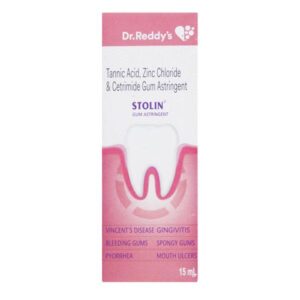ZINC + CETRIMIDE + TANNIC ACID
Zinc: Drug: Zinc
Use: Zinc is a mineral supplement that is used to treat or prevent zinc deficiency. It is also used to boost the immune system, aid in wound healing, and support reproductive health.
Mechanism of Action: Zinc plays a vital role in various physiological processes in the body. It is required for the proper functioning of over 300 enzymes and is involved in DNA synthesis, protein synthesis, and cell division. Zinc is also essential for immune function, as it influences the production and activity of white blood cells and helps to regulate inflammation. Additionally, it is involved in the growth and development of reproductive organs and is necessary for normal fertility.
Dose: The recommended daily allowance (RDA) for zinc varies depending on age, sex, and specific requirements. For adults, the RDA is around 8-11 mg for males and 8 mg for females. In cases of deficiency or specific conditions, higher doses may be prescribed under medical supervision.
Side Effects: Generally, zinc is safe when taken within the recommended dosage range. However, higher doses or long-term use can lead to side effects such as nausea, vomiting, diarrhea, stomach cramps, and headaches. Prolonged excessive zinc intake can interfere with the absorption of other essential minerals like copper and iron, potentially leading to deficiencies. Some individuals may also experience an allergic reaction to zinc supplements, characterized by symptoms like itching, rash, or swelling.
It is important to consult with a healthcare professional before starting zinc supplementation, especially if you have any underlying medical conditions or are taking other medications, as they can interact with zinc. Pregnant or breastfeeding women should also seek medical advice to determine the appropriate dosage.
Cetrimide: Cetrimide is a topical antiseptic drug that is commonly used for disinfecting wounds and preventing infection. It belongs to the quaternary ammonium compound class of antiseptics.
The primary mechanism of action of cetrimide is its ability to disrupt the cell membranes of bacteria, fungi, and viruses, leading to their death. It does this by binding to the negatively charged components of the microbial cell membrane, causing destabilization and leakage of cellular contents. Cetrimide also has mild surfactant properties, which aid in removing contaminants from the skin or wound site.
Cetrimide is available in various forms, including creams, lotions, and solution concentrations of 0.1-3%. The appropriate dose and frequency of application will depend on the specific condition being treated and the formulation used. It is important to follow the instructions provided by the healthcare professional or the product label.
As with any medication, cetrimide may have side effects. The most common side effects include skin irritation, itching, redness, and allergic reactions. Some individuals may also experience a burning or stinging sensation at the application site. If any severe or persistent side effects occur, it is important to discontinue use and seek medical attention.
It is worth noting that cetrimide should not be ingested or used on large open wounds or deep puncture wounds, as it may cause systemic toxicity. Additionally, individuals with known allergies to cetrimide or similar antiseptic agents should avoid its use.
Overall, cetrimide is a widely used antiseptic that effectively kills various microorganisms and helps prevent infection. However, it is essential to use it as directed and to consult a healthcare professional if any concerns or questions arise.
Tannic Acid: Tannic Acid is a natural compound that is derived from the bark or leaves of certain plants, such as oak trees. It is commonly found in medicinal herbs and is utilized for various purposes.
Use:
Tannic Acid has multiple uses, both in medicine and in various industries. In medicine, it is primarily used as an astringent, which means it helps to constrict or shrink body tissues. It is commonly used topically to treat conditions such as minor cuts, burns, and insect bites. Additionally, it can be used orally as a throat gargle for sore throat relief. In industries, Tannic Acid is utilized in the production of ink, dyes, tanning leather, and in the manufacturing of certain beverages, such as wine and beer, to clarify and stabilize them.
Mechanism of Action:
When applied topically, Tannic Acid interacts with proteins in the skin, forming a protective barrier. This barrier helps to prevent infection and promotes the healing process by reducing inflammation and promoting the tightening of tissues. When used orally as a gargle, Tannic Acid acts as an astringent on the throat tissues, providing relief from soreness and inflammation.
Dose:
The specific dosage of Tannic Acid can vary depending on the condition being treated and the formulation of the product being used. It is important to carefully follow the instructions provided by healthcare professionals or the product label. Typically, Tannic Acid is used as a topical solution or ointment and should be applied to the affected area as directed. For oral use, it is usually in the form of a liquid gargle and should be used as directed, typically by diluting with water.
Side Effects:
Tannic Acid is generally considered safe when used as directed. However, like any medication, it may cause some side effects. Common side effects of topical use include skin irritation, redness, or dryness at the site of application. When used orally, it may cause a temporary discoloration of the teeth or mouth and a bitter taste. In rare cases, allergic reactions may occur, such as itching, hives, or swelling. If any severe or persistent side effects are experienced, it is important to seek medical attention.
It is essential to consult with a healthcare professional before using Tannic Acid, especially if you have any pre-existing medical conditions or are taking other medications, to ensure its safe and appropriate use.

